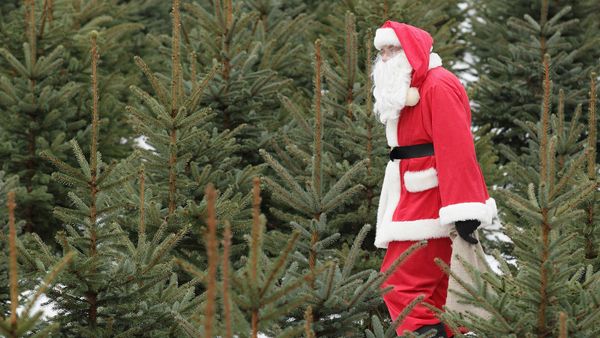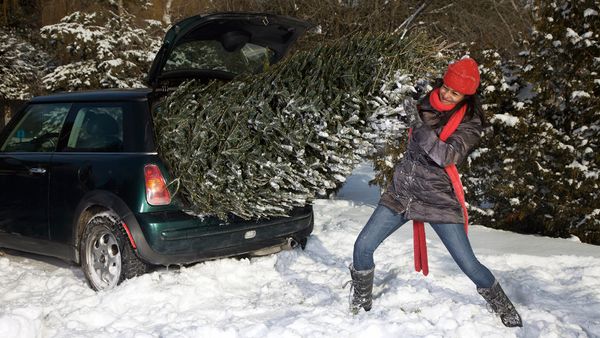
Decorating your house can certainly put you in the holiday spirit. But it can also create unwanted safety hazards — think lit candles, neglected fireplaces, damaged string lights and especially dried-out Christmas trees.
But have you ever considered that your Christmas tree might be a danger before you even get it home?
Advertisement
According to the Automobile Association of America (AAA), 44 percent of Americans who plan to buy a live Christmas tree won't take the steps necessary to get it home safely. And that's even though 16 percent of them have already had their Christmas tree fall off or out of their car during the trip home.
It might sound like the plot to a ridiculous Christmas comedy, but it's a real danger to everyone on the road. Ellen Edmonds, manager of public relations for AAA, said in 2019 that the organization's 2016 research on the dangers of road debris inspired the report.
"What many people may not realize is that transporting a real Christmas tree is the same as hauling any other kind of large object," Edmonds said via email. "Making sure the tree is properly secured will help prevent vehicle damage and lessen the chance of it coming loose and creating a potential hazard for other drivers."
If you think it's easy to avoid a Christmas tree in the road, think again. As Edmonds mentioned, a Christmas tree is similar to other large debris. And AAA's research found that more than 200,000 car crashes were caused by road debris between 2011 to 2014, resulting in about 39,000 injuries and 500 deaths.
And even if the crash is minor and doesn't cause any bodily harm, a tree can cause thousands of dollars in vehicle damage. Plus dropping a tree on the road is against the law in all 50 U.S. states, often resulting in fines up to $5,000 or possible jail time.
AAA has some helpful hints on taking your Christmas tree home safely.
- Choose the right vehicle, such as one with a roof rack, a pickup truck, SUV or van.
- If you don't have a car with a roof rack (or have access to an SUV or truck) transport the tree inside your car or trunk.
- Wrap the tree in netting to secure loose branches.
- Put an old blanket on the roof of your vehicle, and put the tree on top with its trunk facing the windshield.
- Take your own rope or ratchet straps to secure the tree at the front, middle and back, using tie-down points built into your vehicle. Loop the rope or strap around the tree's trunk to prevent shifting.
- Avoid highways and driving at high speeds, if possible, because wind resistance can still shake the tree loose.
In other words, transporting a Christmas tree home safely isn't much different from anything else of that size you might buy or carry. Just don't get carried away with the holiday cheer. A few extra minutes before you drive off can make all the difference in your family's Christmas experience.
Advertisement


